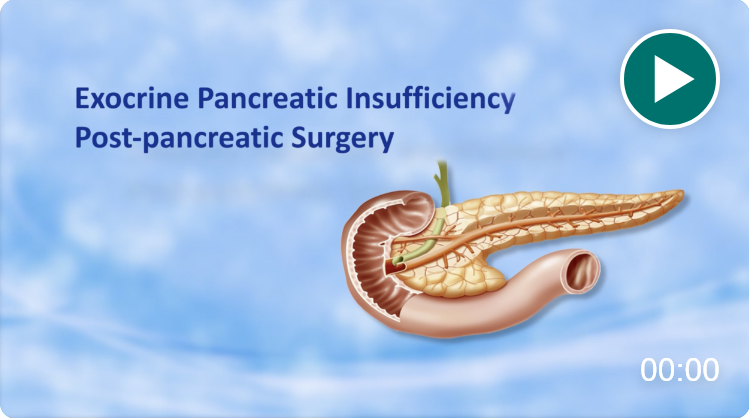
EPI Education
Take a deep dive into EPI and learn from experts in the field.
About EPI: EPI pathogenesis, symptoms, and diagnosis
Etiologies of EPI: Recognize EPI and the barriers to diagnosis
Management of EPI: Key information for managing EPI
Case Studies: Experts present case-based narratives on EPI
Select one or more filters below to explore topic-specific resources.
Transcript
Today we're going to be talking about exocrine pancreatic insufficiency, EPI. Exocrine pancreatic insufficiency or EPI is defined as a reduction in pancreatic enzyme production and/or activity to a level below the threshold required to maintain normal digestion.
The pancreas, it's an organ that has a significant amount of functional reserve. Before the patients develop EPI, there has to be a significant amount of damage to the gland. There's multiple mechanisms that lead to EPI. We know that a decreased production is one of them, and it's what we see the most in patients with chronic pancreatitis and parenchymal disease. Decreased delivery of enzymes it's another one that is frequently seen, particularly in patients with pancreatic cancer and ductal obstruction.
Asynchrony of gastric emptying, which we see in patients with gastric and duodenal surgeries. For example, patients with Roux-en-Y and gastric bypass for morbid obesity that leads to malabsorption and weight loss. And decreased activation, which we don't see as often and it's usually related to high acid states that degrade the pancreatic enzymes leading to deactivation and malfunction. For example, patients with gastrinomas.
One of the problems is that these symptoms may be very non-specific, particularly at the beginning of the disease like bloating, abdominal distension, abdominal pain that can be very non-specific. Frequent bowel movements, diarrhea. The issue is when patients start to describe weight loss, that should be a major red flag that should lead us to think that the patient has exocrine pancreatic insufficiency.
Exocrine pancreatic insufficiency leads to weight loss and malabsorption. One of the major problems that we have is malabsorption of fat-soluble vitamins like vitamins A, D, E, and K, particularly in patients with chronic pancreatitis that may have had a long period without the diagnosis of EPI. They may develop metabolic bone disease that may be under-recognized.

Clinical Consequences of EPI
Review the pathogenesis and clinical consequences of EPI.

Take an immersive journey into the physiology of the exocrine pancreas and the pathophysiology of EPI.

















